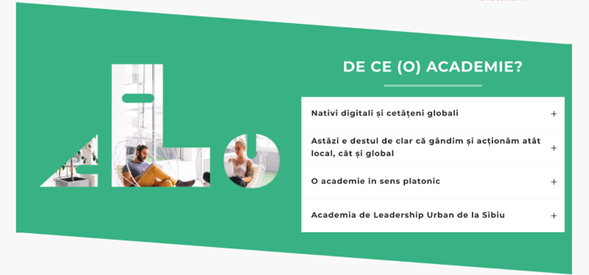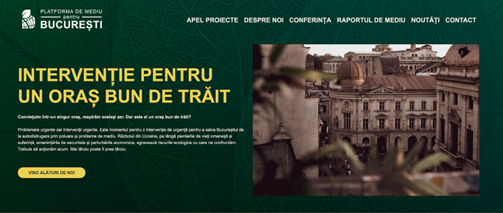Community foundations: Chipping away at the gridlocks in systemic transformation

We are now living immersed in interconnected challenges of planetary scale, with climate change most deeply and devastatingly interlinked with everything. We see complexity play out live, cascading into society and onto our screens. Our daily lives have become inundated by news of polarisation.
Confronted with the scale and ripple effects of complexity, taking refuge in a polarised position becomes almost understandable as a coping mechanism for lack of control. Its rewards might be a perception of belonging and a sense that antagonising is more empowering than feeling left out. The cost we collectively pay for this dynamic is a stalemate on vital issues, becoming paralysed by narratives pitting groups against each other instead of moving forward, towards building a different future.
Despite the discourse, nobody truly owns these challenges. No one “side” has the capacity to shift them. It just happens to be the opposite of what overcoming planet-level challenges takes: deep collaboration.
How can philanthropy play a part in chipping away at these gridlocks and be a tool for bridging, testing new solutions and constructive action?
Let’s look for inspiration in some of the practices of a distinct kind of philanthropic infrastructure: the community foundation (CF).
- Expanding opportunity: Surfacing local assets and cultivating new talent to multiply the change-making capital in communities
CFs are place- (rather than issue-) focused. They approach their geographic region through a lens of local assets, which they mobilise to operate their fundraising and grantmaking.
To be effective stimulators of community-led development, CFs continuously map their constituency – people, organisations and businesses – and the issues their communities care about. These assets, actors and ambitions become the moving parts of the mechanisms that CFs set in motion for an expansive local dynamic that multiplies them.
To achieve this expansive dynamic, driving participation and attracting newcomers are key.
CFs design engaging formats that lower the barrier of entry into philanthropy and civic entrepreneurship. Formats like sports fundraising events and idea incubation grants often draw in first time donors and doers. These participants experience exciting ways of getting involved in issues close to their hearts: as fundraisers for a cause or as leaders of a civic initiative, encouraged by a seed grant, a capacity development initiative or another form of start-up support.
What if new leadership is slow to emerge? Build a constituency incubator
The Sibiu Community Foundation, together with a corporate partner, have recently launched the Academy for Urban Leadership. It offers workshops, mentoring and micro-grants to emerging leaders in civil society, business and public institutions – a bid to cultivate the next generation of community leaders.

The programme connects the professional success of the individual with that of the community, investing in a culture of engagement over the long run. It offers participants space to think, test and learn together, and to practice cross-sector collaboration.
It is also a bet on keeping talent in the community by giving people opportunities to use their skills for public good. These emerging leaders are likely to become future donors, grantees and allies of the community foundation. Most powerfully, they may inspire their peers to find their own ways of making their community a better place.
- Platforming collaboration: Holding space for a shared vision to emerge and structuring the sustained engagement required to solve big challenges
Because they have a holistic view of their community, but are also “close to the ground” and knowledgeable of the actors and relationship dynamics in their locality, CFs often play the role of dialogue facilitators on selected issues. Their convening power is a result of the credibility gained through consistent neutrality, transparency and care for co-creative processes. These characteristics establish trust in the eyes of the stakeholders invited to the table, helping them to create a shared vision, framing the issue as integral to a better future for the community.
The shared vision becomes the basis for a mechanism of action – often in the shape of a grantmaking programme – with some of those stakeholders becoming strategic partners engaged in the long-term process of moving the needle on that issue.
What if complex challenges run under (or over) the radar?
In the face of complexity, you can be the bold convener and articulator of a systems challenge, guiding key actors into a journey of catalysing a shift. Designing this process includes aligning incentives to stay engaged and defining actions to generate learning and keep momentum going.
Environmental risks in a highly polluted capital city is a complex problem space that no individual grantee or community partner can shift. The Environmental Platform is Bucharest Community Foundation’s response to the need for a comprehensive approach to the city’s urgent and intersected challenges of climate change, air quality, urban nature, waste management, circular economy, mobility and the built environment.

“We live in the same city and breathe the same air. We need to replace conflict with collaboration and build bridges over the fault lines that divide us to solve environmental problems.”
CFs can be catalysts and stewards of platforms that give a backbone to ambitious collaborative initiatives, raising complex issues to the level of the public agenda and structuring a process that advances both thinking and action. The Environmental Platform includes a conversation agenda, a research component and a grantmaking fund – all aiming to transform Bucharest into a collective impact ready community by 2024.
- Resourcing flexibly: Grantgiving that builds trust relationships and resilient capacities over the long run
If more groups with newer and bolder ideas about improving aspects of life in the community have access to resources to get started, everybody stands to benefit ‒ not only through the direct effects of potential innovations, but through an environment that incentivises civic entrepreneurship and learning by doing. This is the reasoning of CF grantmaking in emerging philanthropic spaces: Grants are trust-giving opportunities that often start small in amount, but are generous in how the funder-grantee relationship is shaped and resourced, in more ways than monetary ones.
What other assets make a difference, if money is limited?
The Sibiu CF mobilised its connections to create a leadership programme giving access to high-quality mentoring. The Bucharest CF is investing its hard-earned credibility into powering a platform that is building the trust and collaboration layer crucial for collective action on the environment.
Getting more people invested in your success also makes a difference. Most of the 19 CFs in Romania hold a variety of fundraising events that bring new individual donors into the field, enlarging the space not just for existing NGOs, but for individual change-makers and emerging groups. Grants become a trust contract among many partners, aligned in their desire to contribute to change. The CF role in these situations is less about managing outcomes and controlling indicators, and more about creating resourcing opportunities and support spaces that are flexible and enable learning.
What can philanthropy infrastructure organisations consider for their practice?
- Invest in emergence: Betting on newcomers feels risky when there are no known stories of success. Finding a handful of partners with aligned vision to expand the space, and thoughtfully designing incentives into a programme can build enough momentum to get the innovation snowball rolling.
- Place is binding: Local communities are where complex global challenges erupt, but also where belonging drives people to feel invested in the future of that shared place. Communities are the ultimate sites for systems change, holding all the ingredients that catalysts can work with towards transformation.
- Spaces for daring and sharing: As these practices travel between CFs, new learnings emerge. These are surfaced and disseminated in the network by the Romanian Federation of Community Foundations, the membership body that oversees quality standards, keeps track of innovations and stimulates opportunities for national grantmaking programmes. These can integrate promising practices: to incentivise new doers, support learning networks, and resource flexibly with different kinds of assets.
These case studies will be presented at the PEXforum workshop on 26 August: From managing to synchronising – Uplifting local communities and driving social change, where we will explore how local philanthropy infrastructures can chip away at gridlocks.
Authors

